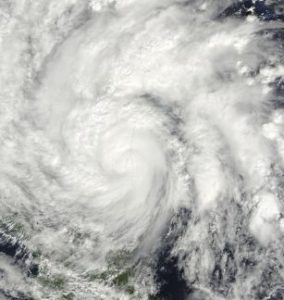 Do employees have a privacy right in the shape of their faces, the color of their eyes, or the texture of their fingertips? In many states, the law now says yes—leading employers to ask: Are resulting biometric privacy claims covered under their existing policies, or is insurance otherwise available?
Do employees have a privacy right in the shape of their faces, the color of their eyes, or the texture of their fingertips? In many states, the law now says yes—leading employers to ask: Are resulting biometric privacy claims covered under their existing policies, or is insurance otherwise available?
Federal Court Holds Allegations of Coronavirus on Premises Sufficiently Allege Physical Loss of or Damage to Property

Judge Catherine C. Eagles of the U.S. District Court for the Middle District of North Carolina made the right call by allowing a large hospital system policyholder to litigate the merits of its COVID-19 business interruption claim to recovery where so many others have had that door improperly and prematurely shut by other federal courts recently.
Flooded by Ida? Many Policyholders Can Expect Increased Premiums for Flood Insurance
 After hitting the shores of Louisiana with winds of up to 172mph in late August, Hurricane Ida’s remnants barreled up to the northeastern United States, leaving waves of destruction in its wake. The deluge of rain—more than half-a-foot fell in just a few hours—turned streets and subway platforms into rivers. The catastrophic flooding caused by the record-breaking rainfall killed several dozen people, left thousands without power, and damaged countless homes and businesses. All told, Ida is said to have caused more than $50 billion in damage. And scientists predict that, because of climate change, heavy rainfall-producing storms like Ida will only become more and more frequent.
After hitting the shores of Louisiana with winds of up to 172mph in late August, Hurricane Ida’s remnants barreled up to the northeastern United States, leaving waves of destruction in its wake. The deluge of rain—more than half-a-foot fell in just a few hours—turned streets and subway platforms into rivers. The catastrophic flooding caused by the record-breaking rainfall killed several dozen people, left thousands without power, and damaged countless homes and businesses. All told, Ida is said to have caused more than $50 billion in damage. And scientists predict that, because of climate change, heavy rainfall-producing storms like Ida will only become more and more frequent.
Couch’s “Physical Alteration” Fallacy: Its Origins and Consequences
Look at virtually any COVID-19 case favoring an insurer, and you will find a citation to Section 148:46 of Couch on Insurance. It is virtually ubiquitous: courts siding with insurers cite Couch as restating a “widely held rule” on the meaning of “physical loss or damage”—words typically in the trigger for property-insurance coverage, including business-income coverage. It has been cited, ad nauseam, as evidence of a general consensus that all property-insurance claims require some “distinct, demonstrable, physical alteration of the property.” Indeed, some pro-insurer decisions substitute a citation to this section for an actual analysis of the specific language before the court.
In a new article in the Tort, Trial & Insurance Practice Law Journal, colleague Scott Greenspan and co-authors address the history and development of the “physical loss” rule, Couch’s distortion of it, and its impact on contemporary litigation. They also explore the correct rule, as explained in pre-and post-Couch precedent and in other treatises that more accurately state the law. Finally, the authors articulate the severe consequences that will follow for policyholders—banks, businesses, and homeowners—if Couch’s rule, continues to be blindly followed by courts without knowledge of its origins in legal quicksand.
Your CGL Policy May Provide Coverage for a Data Breach
 As cybercrimes and data breaches continue to cause significant damage to companies of all types, policyholders are looking to their various insurance policies for coverage to help weather the storm and recoup losses. A recent decision by the U.S. Court of Appeals for the Fifth Circuit highlights the need for companies to review all of their policies for potential cyber-related coverage, including their CGL policies.
As cybercrimes and data breaches continue to cause significant damage to companies of all types, policyholders are looking to their various insurance policies for coverage to help weather the storm and recoup losses. A recent decision by the U.S. Court of Appeals for the Fifth Circuit highlights the need for companies to review all of their policies for potential cyber-related coverage, including their CGL policies.
PFAS Enforcement and Liability Is on the Rise—Insurance Can Help
 A key component of a company’s risk management function is to keep a close eye on new and developing sources of liability and to put in place appropriate insurance to respond in the event those liabilities ripen. In recent years, there has been a significant increase in legal and regulatory attention on per- and polyfluoroalkyl substances, more commonly known as “PFAS” or “forever chemicals.” PFAS are used in countless applications, and many companies across the country bear potential liability, from chemical companies to manufacturers to retailers to corporate end users. PFAS-related enforcement is focused on remedying impacts to both the environment and human health. Importantly, a company’s liability for PFAS-related contamination or bodily injury may be covered under historic general liability policies and/or modern-day pollution liability policies. As regulation and litigation relating to these ubiquitous substances continues to surge, corporate policyholders with potential exposure should be proactive to examine their insurance portfolios and position themselves for potential insurance coverage in the event they become a PFAS liability target.
A key component of a company’s risk management function is to keep a close eye on new and developing sources of liability and to put in place appropriate insurance to respond in the event those liabilities ripen. In recent years, there has been a significant increase in legal and regulatory attention on per- and polyfluoroalkyl substances, more commonly known as “PFAS” or “forever chemicals.” PFAS are used in countless applications, and many companies across the country bear potential liability, from chemical companies to manufacturers to retailers to corporate end users. PFAS-related enforcement is focused on remedying impacts to both the environment and human health. Importantly, a company’s liability for PFAS-related contamination or bodily injury may be covered under historic general liability policies and/or modern-day pollution liability policies. As regulation and litigation relating to these ubiquitous substances continues to surge, corporate policyholders with potential exposure should be proactive to examine their insurance portfolios and position themselves for potential insurance coverage in the event they become a PFAS liability target.
Follow the Leader: How Ambiguities in Excess Follow-Form Policies Can Lead Policyholders Down a Crooked Path
 A feature of most corporate liability insurance programs is the tower system of coverage: a primary policy with several overlying excess policies stacked atop one another collectively providing coverage up to a desired (or available) limit of liability. Depending on the size and liability exposures of a policyholder, a tower can consist of dozens of policies providing limits totaling hundreds of millions of dollars. Adding to this complexity, excess policies often share layers of coverage in quota share arrangements, sometimes subscribing to the same policy but more often issuing separate policies for a stated percentage of the quota share whole. To avoid as much as possible an impenetrable web of conflicting coverage terms, excess policies often “follow form” to the underlying coverage (usually to the primary policy) providing the insurer certainty and providing the policyholder a consistent tower of coverage. It is not always possible, though, to obtain clarity and certainty in tower placements. Insurance companies issuing excess coverage may not wish to agree to all the terms included in the underlying policies, and so may offer additional or differing terms, creating inconsistencies in an otherwise monolithic tower. For example, a primary insurer may refuse to cover punitive damages whereas an excess insurer may agree to do so, or vice versa.
A feature of most corporate liability insurance programs is the tower system of coverage: a primary policy with several overlying excess policies stacked atop one another collectively providing coverage up to a desired (or available) limit of liability. Depending on the size and liability exposures of a policyholder, a tower can consist of dozens of policies providing limits totaling hundreds of millions of dollars. Adding to this complexity, excess policies often share layers of coverage in quota share arrangements, sometimes subscribing to the same policy but more often issuing separate policies for a stated percentage of the quota share whole. To avoid as much as possible an impenetrable web of conflicting coverage terms, excess policies often “follow form” to the underlying coverage (usually to the primary policy) providing the insurer certainty and providing the policyholder a consistent tower of coverage. It is not always possible, though, to obtain clarity and certainty in tower placements. Insurance companies issuing excess coverage may not wish to agree to all the terms included in the underlying policies, and so may offer additional or differing terms, creating inconsistencies in an otherwise monolithic tower. For example, a primary insurer may refuse to cover punitive damages whereas an excess insurer may agree to do so, or vice versa.
Check Your Policies for Privacy Claim Coverage: New York City’s New Biometrics Law Is Now in Effect
 Since July 9, 2021, New York City’s businesses have been subject to the requirements of a new biometrics law. Businesses operating in New York City should consider both their potential liability under these new requirements and whether their current insurance program protects them against associated risks.
Since July 9, 2021, New York City’s businesses have been subject to the requirements of a new biometrics law. Businesses operating in New York City should consider both their potential liability under these new requirements and whether their current insurance program protects them against associated risks.
Insurance Considerations for Cannabis Delivery Services
 The legal cannabis industry in the U.S. is growing at an unprecedented rate and is projected to reach $73.6 billion by 2027. While federal law still classifies marijuana as a Schedule I drug, many states have legalized both medical and recreational marijuana. As state restrictions ease, new business opportunities continue to emerge.
The legal cannabis industry in the U.S. is growing at an unprecedented rate and is projected to reach $73.6 billion by 2027. While federal law still classifies marijuana as a Schedule I drug, many states have legalized both medical and recreational marijuana. As state restrictions ease, new business opportunities continue to emerge.
Covering the Highlight Reel: The Need for Insurance Options to Protect NFT Owners

Winning a championship ring is everything. Just ask the Los Angeles Dodgers, who won 11 National League West titles between their 1988 and 2020 World Series Championships and would likely have traded several of those division titles for more World Series championships. But, of course, not all rings are equal. Neither are sports collectibles.




